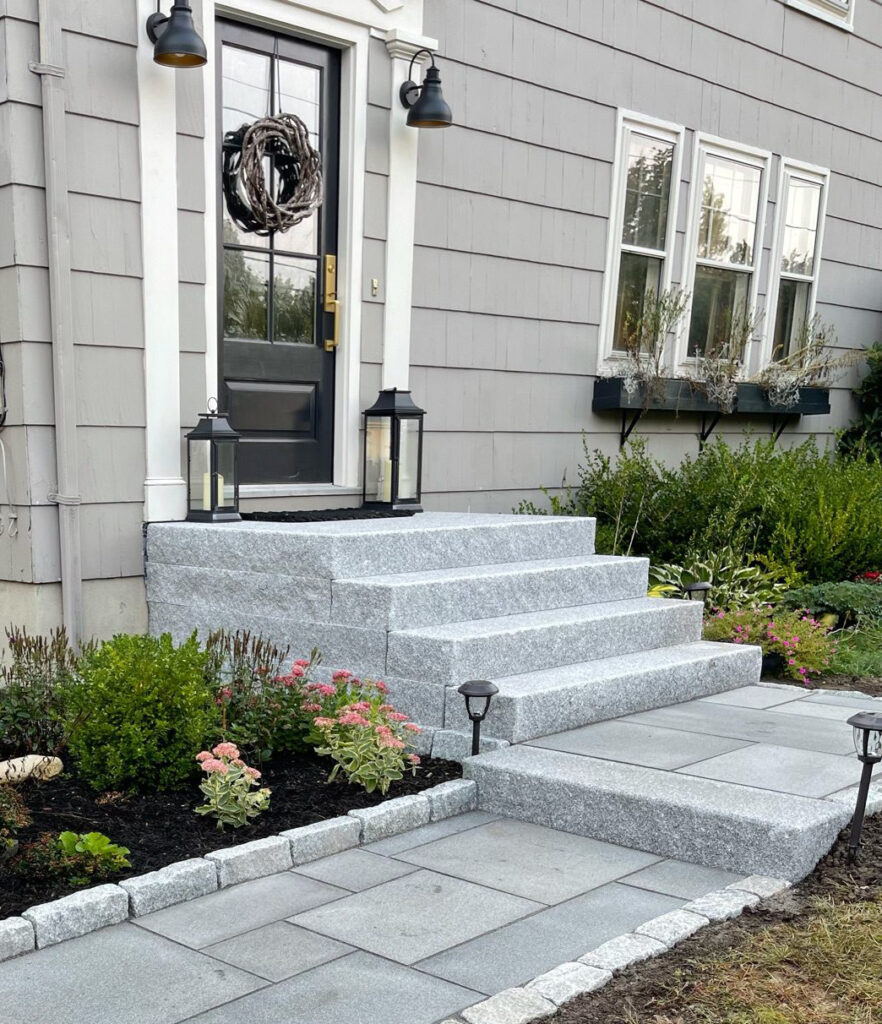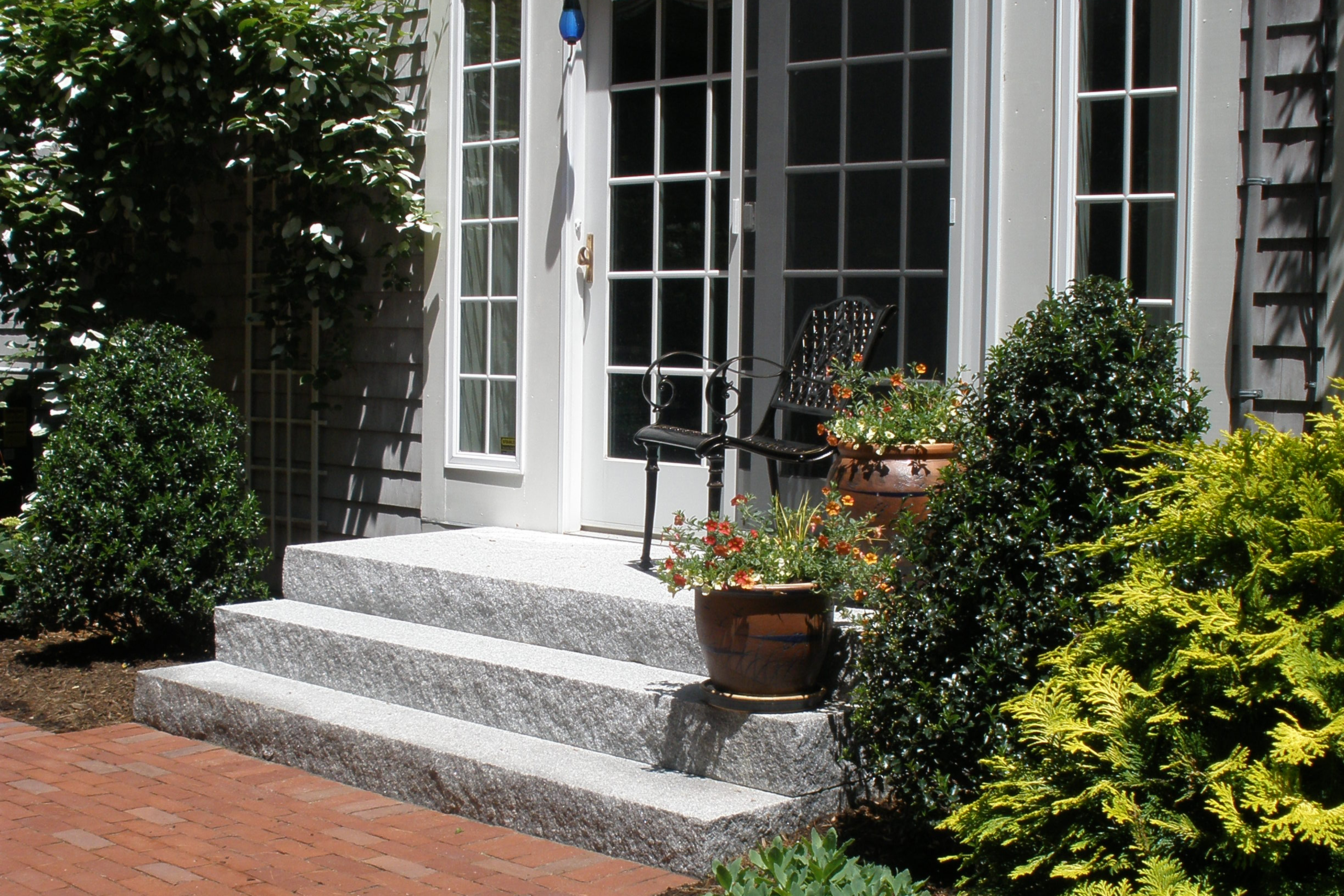Your Home’s New England Curb Appeal Starts with The Steps

If you drive around New England, one thing you’ll notice is the use of granite and natural stone on structures from state buildings to countryside homes. “Look around. All the old houses and barns have slabs of granite stacked to make the foundation. It’s just something that’s been used since we were founded here,” says Robert Howard of Stone Solutions Maine. He’s been using Swenson granite in the majority of his projects, many of which are rebuilding steps that have rotted or succumbed to the harsh weather conditions that the East Coast can dole out.
-2.jpg)
He says concrete and brick are susceptible to extreme New England weather, unlike granite. “Granite withstands everything. In the winter, we use a lot of salt, which just eats away at masonry,” Howard explains. Salt deteriorates the mortar joints, allowing water inside, where it freezes and pushes everything around. That’s when bricks start to pop. You’re not going to have that with granite.”
.png)
Project by Pellettieri Associates, Inc.
Whenever Howard gets a call about steps in his New England territory of Maine, he usually finds they’ve rotted all the way through. “They ask us what to do. We tear it out and put in granite. Then they never have to worry about it again,” he says.
Not only can the old steps become unsightly but they can also become a safety hazard. “When you have bricks falling off, that becomes dangerous,” Howard says.
.jpg)
Other times, people just want to upgrade the front of their home and get that classic New England look. Woodbury Gray™ Granite is the most popular granite in the New England area for several reasons:
- Its durability.
- Its lighter color doesn’t get as hot as other stones.
- It’s not affected by the freeze-thaw cycle: It won’t flake or peel.
- Its tops have a thermal finish for slip resistance in snow and rain; they will never wear off like an applied finish on manufactured materials like stamped concrete.
Howard said there are many ways to use Woodbury Gray™ granite steps to improve a home’s curb appeal. “We did some beautiful steps with granite pavers and a cobblestone border that turned out fabulous. It costs a little more to do the border, but it just takes it to a whole ‘other level. It really dresses up whatever paver you use.”
.png)
Project by Seoane Landscape Design
He also likes using granite treads to cap stone steps. “For one customer, we transformed their whole wooden entryway with a custom stone landing and steps topped with granite treads, and it just looks so sharp with the granite and stone.”
If you want brick or stone steps and walls, Howard highly recommends a granite tread or cap to protect them. “Nothing is getting through a piece of granite. It protects all the masonry work underneath.”

Woodbury Gray™ Granite comes in several finishes and styles, such as Rock Face, Split Face and Old Yankee. You can also add customization by having Swenson’s stone specialists sandblast/engrave your address into the steps.
See our product page for photos of all the finishes and styles available.
Howard says his favorite granite step style to use is the cushion edge, a softer rounded edge detail that’s available as a custom order at Swenson Granite Works. “It’s not as angular as the others, and it just gives the steps a nice antique appearance.”
.png)
Whether your steps are at the point where they are an eyesore or a hazard, or you just want to upgrade the curb appeal of your home, Howard has some recommendations on where to start with a new step project:
Get an idea of what you want. Drive around and look at other homes to see what fits in with your area’s architecture. Look online and start saving images to a Pinterest board. Look at catalogs from manufacturers’ and builders’ portfolios; many have them on their websites. And Howard advises making a trip to a local dealer like Swenson Granite Works. “Sometimes you see something in a catalog, and it doesn’t look the same in person. It’s really good to go lay eyes on it.”
For additional help, refer to our previous blog: How to Choose a Step Style That’s Right For Your Home
Call a professional. Call a contractor such as Howard. “I’ll come out and evaluate and walk you through the different styles of granite steps. Howard also speaks highly of going straight to Swenson. “They’re very knowledgeable and they’ll walk you through colors and styles. Bring your measurements and you can use the Swenson Step Worksheet to start putting a plan together.”
Be Aware of Cost. Howard says it’s a good idea to get pricing on a range of steps, but he feels that granite is always the best choice. “I get asked by a lot of people to build stone steps and that’s going to cost twice as much as simply putting in granite and calling it a day. There’s labor cost and the fill. People need to educate themselves. Granite is really cost-effective for what you’re getting, and you’re never going to have to mess with it again.”
Prep your space for the project. Howard also gives a heads up that Swenson will sell the steps and install them, but they won’t demo your old steps or put in the prep pad. However, they can refer you to a contractor such as Howard to do that work.
To get an idea of the pad preps and the installation process, see our previous blogs.
Installing Granite Steps Step-by-Step
How to Create a Concrete or Gravel Pad
.jpg)
Howard highly recommends a trip to your local Swenson Granite Works store to start your project, whether to take a look at the stone available or start a full project plan. “I’ve been going there for almost 30 years and they’re always on point. You’d be amazed. Some other places I go to; they screw up the orders. Those are costly mistakes and moments count. Swenson is always super helpful. It’s always a good experience from when I walk in the door.”
%20(1).jpg)
As for customer feedback on creating a New England look with granite steps. “I’ve never heard anyone say they regretted that decision,” says Howard. “Granite was used to build all the towns around here. It’s just classic. You can’t go wrong.”
